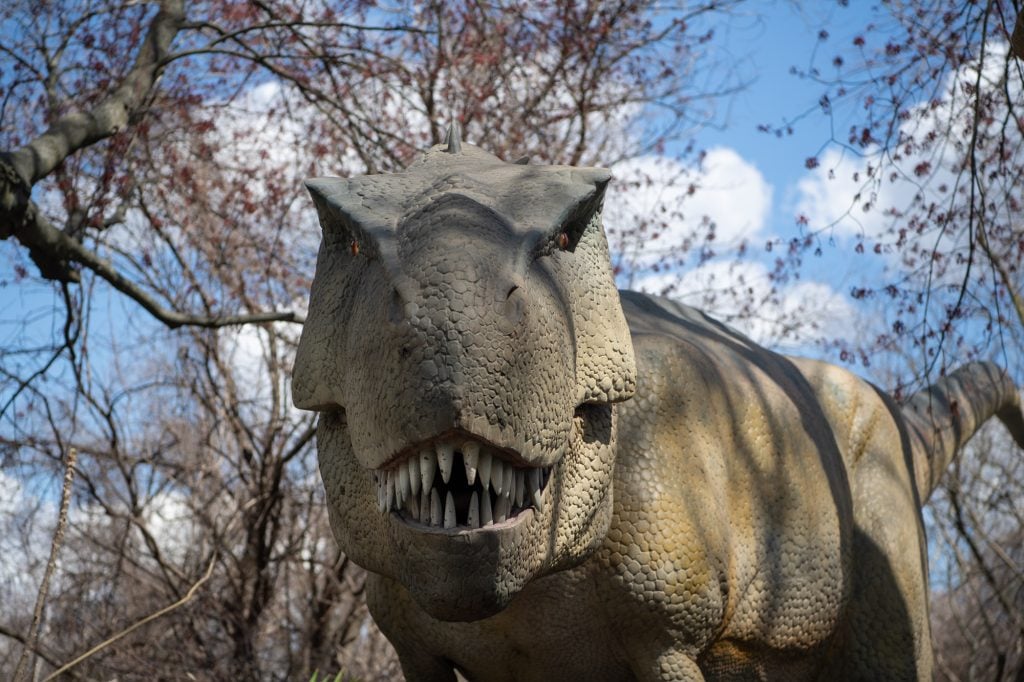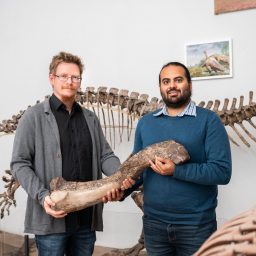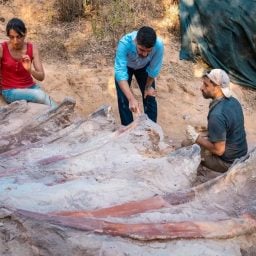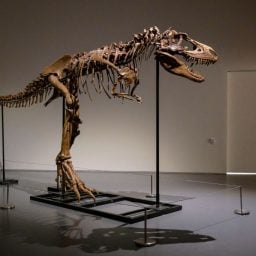Look out New Yorkers! This summer, the Bronx Zoo has been overrun by dinosaurs, and it’s an artist who helped bring them to life.
Artist and illustrator Andrew Minniear is the production designer at Dino Don, the world’s leading dinosaur exhibition company. The founder, Don Lessem, was an advisor on the Jurassic Park films, and has been building full-sized robotic dinosaurs since 2017. And the company estimates some 10 million people have visited its shows over the past 30 years.
It’s Minnear’s job to help design the mechanical frames for the animatronic dinosaurs, as well as their outward appearance, making sure that the sculptures accurately reflect the current scientific understanding about each dinosaur species.
He also helps hand paint the hyper-detailed figures, and oversees production at Dino Don’s factory in Zhegong in the province of Sichuan, west central China.
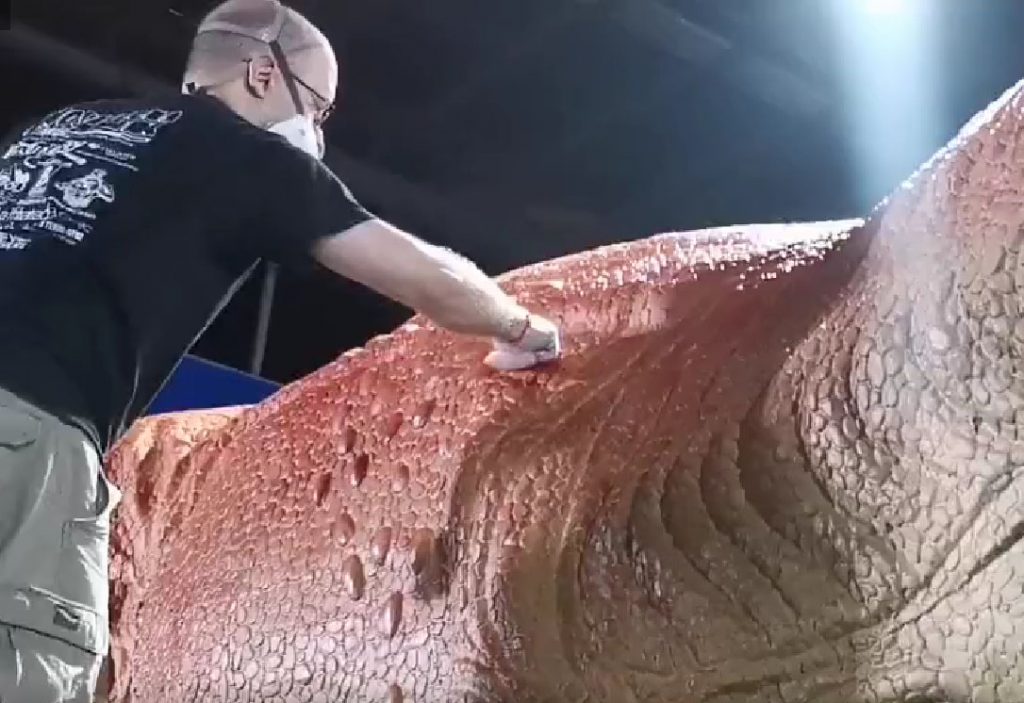
Andrew Minniear painting a dinosaur animatronic sculpture for the Bronx Zoo “Dinosaur Safari” exhibition. Photo by Andrew Minniear.
At the Bronx Zoo, visitors to “Dinosaur Safari” will encounter 52 life-sized animatronic dinosaurs and pterosaurs (extinct flying reptiles) amid two acres of hardwood forest.
It’s actually the third time the zoo has played host to life-size dinosaurs, following outings in 2013 and 2019. This year’s event features the classics, like a 40-foot long Tyrannosaurus rex, as well as less famous species such as the flying Quetzalcoatlus, the largest of the pterosaurs.
We talked with Minnear about what it’s like to sculpt these ferocious creatures.
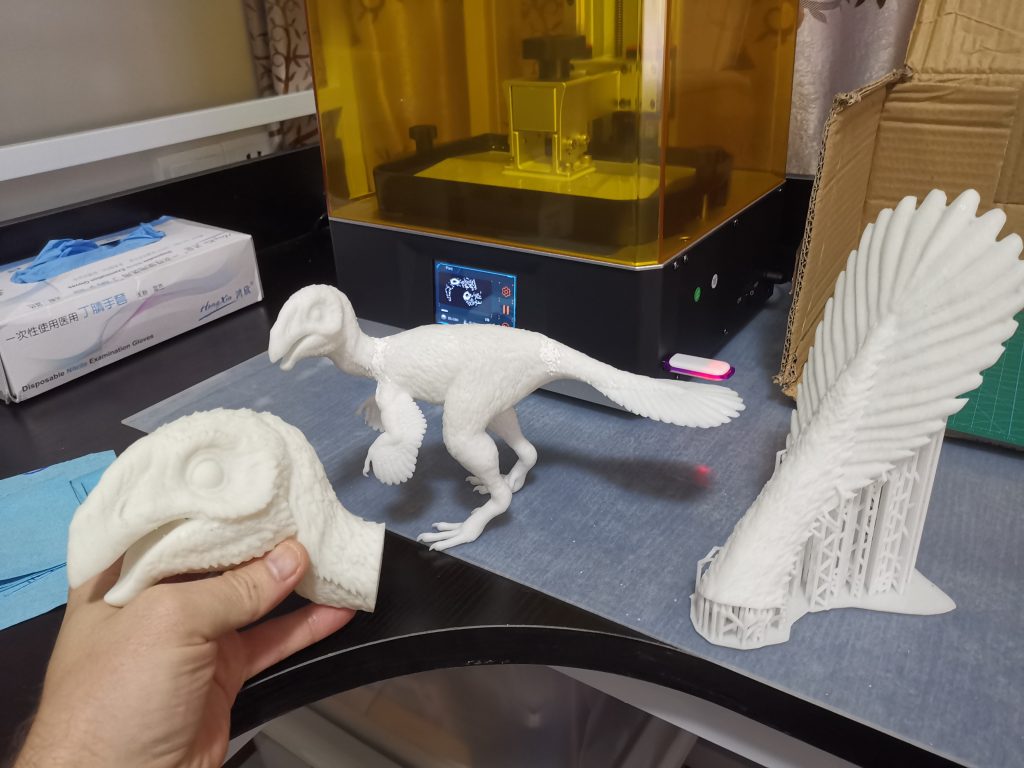
A dinosaur model by Andrew Minniear created for the Bronx Zoo “Dinosaur Safari” exhibition. Photo by Andrew Minniear.
What is your background as an artist, and how did you come to work for Dino Don?
I went to Grand Valley State University in Michigan and studied art. I graduated in 2010, right around the time of the recession, and trying to found work was tough. I became a caricature artist at Disney World [in Orlando]. That was fun, but it wasn’t making ends meet, so I decided to try teaching English in China. That was eight or nine years ago.
I’ve always been fascinated with dinosaurs, and they have always been one of my favorite subjects to draw. I would share my work on a Facebook group dedicated to dinosaur art. One day, I saw a post asking if there was anyone in the group who lived in China and was familiar with dinosaurs and dinosaur anatomy. It was from Don Lessem, and it turned out he was kind of a big deal in the dinosaur community!
That was in late 2019. For a year, I was doing the work in my free time when I wasn’t teaching English, until I got the paperwork for a new visa.
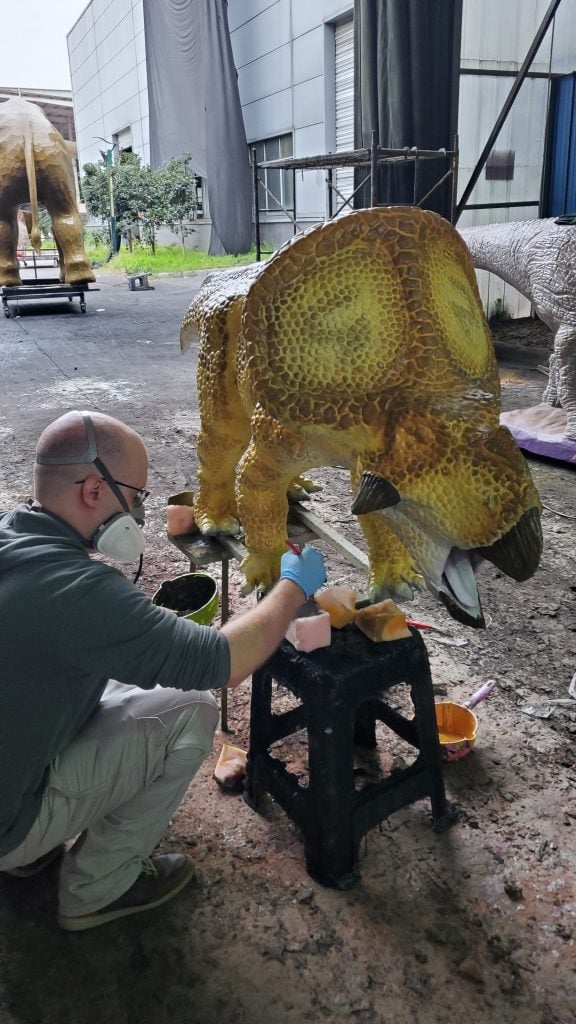
Andrew Minniear painting a dinosaur animatronic sculpture for the Bronx Zoo “Dinosaur Safari” exhibition. Photo by Andrew Minniear.
What does your job entail?
I was brought in as a production supervisor. Don was having issues with the quality of the engineering and the appearance of final products for his dinosaurs. The animatronics were performing poorly and also did not look right. These Chinese factories do a lot of domestic business, but the theme parks here in China are not really focused on the scientific accuracy a lot of the time.
How do you design each sculpture?
To produce the best and most realistic animatronic dinosaurs, I start by producing blueprints. No matter how good the sculpting might be, if the proportions are off, the frames won’t fit, so I allow a lot of leeway for the engineers to produce the mechanics.
I create a digital sculpture using 3-D modeling, and then a rough shape is carved out of foam with a milling machine. Then it becomes much more hands on with manual labor.
After the mechanical frame is covered with upholstery foam, sculptors will carve the basic shapes and then dedicated artists use these devices that get very hot, and they carve all the details and wrinkles onto the sculpture. We apply nylon and silicon to seal the foam and make a silicon skin, and then it’s sent off to the painters who finish the product.
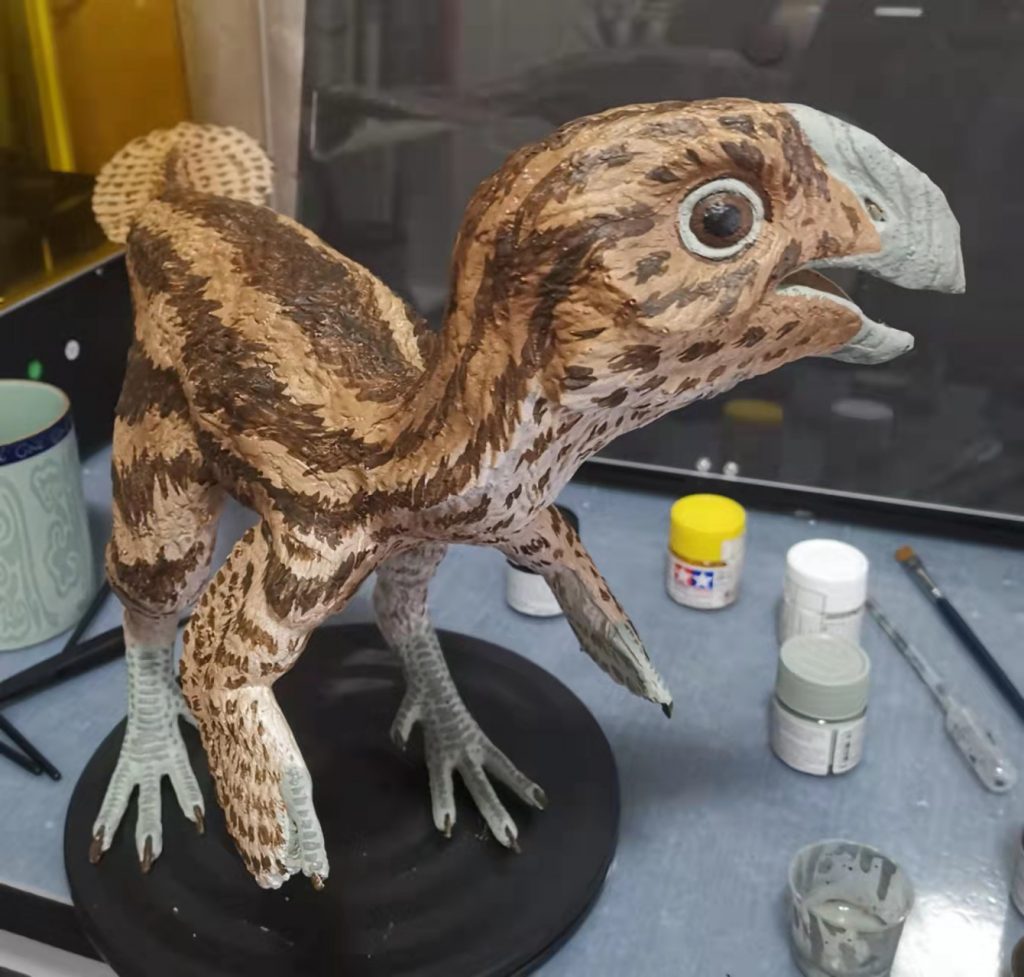
A dinosaur model by Andrew Minniear created for the Bronx Zoo “Dinosaur Safari” exhibition. Photo by Andrew Minniear.
What is the coolest dinosaur to sculpt?
Personally, my favorite dinosaur is Carnotaurus. They are very strange—they’ve got very long legs with very small heads with very large horns over the eyes. And their arms are comically small, even smaller than a T-rex, proportionally. They are a weird, frumpy-looking dinosaur that I find rather charming.
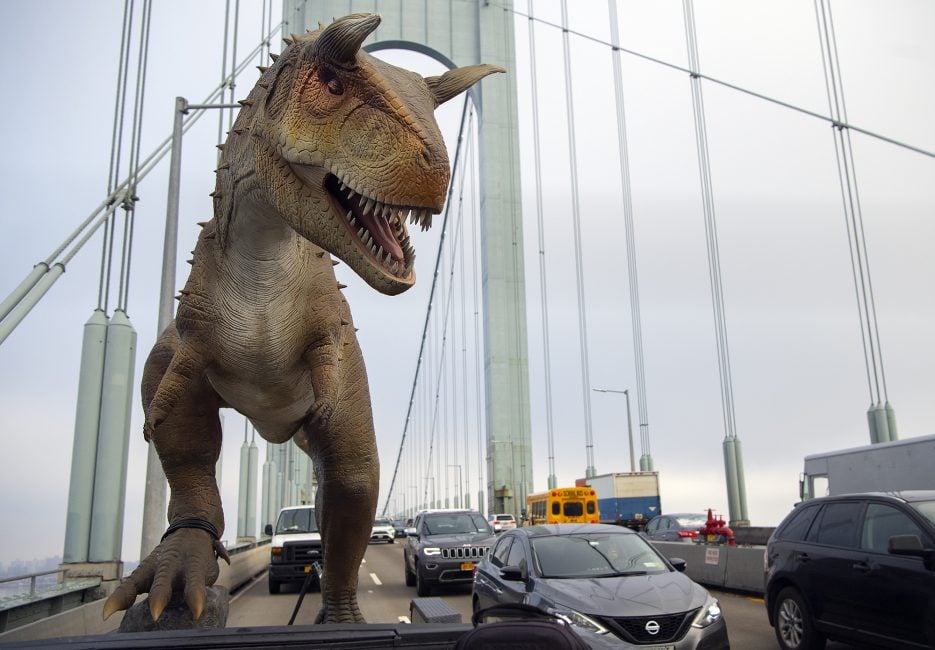
A dinosaur sculpture crosses the Whitestone Bridge to arrive at the Bronx Zoo. Photo by Julie Larsen, ©WCS.
How do new developments and discoveries in paleontology affect your work? Do you ever have to go back to the drawing board based on new scientific information?
The things that really affect what we do are specific discoveries like skin impressions that give us a better idea of the outer appearance of the dinosaur.
A few years ago, an extremely well-preserved specimen called a Nodosaur was found. It died near a salty sea and got buried very quickly in sediment and was basically mummified. It is one of the species I have been basing the reconstructions on.
And then there’s the Spinosaurus, which was the big bad star of Jurassic Park III. They recently discovered that it has a different body form. Its rear legs are much shorter than previously thought, which suggests an aquatic lifestyle. Its proportions are much more like a crocodile.
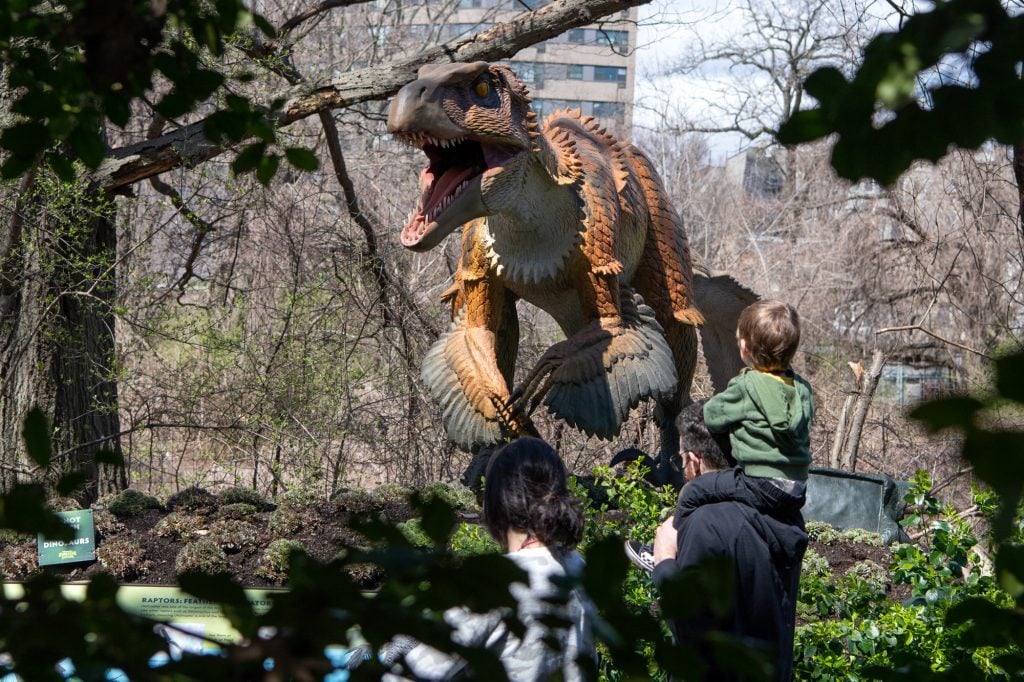
“Dinosaur Safari” at the Bronx Zoo. Photo by Julie Larsen, ©WCS.
How do you decide what color to paint the dinosaurs?
If the client has a specific color in mind, we defer to them to create the color guide for the dinosaur. But when I have more creative freedom, I look to birds and even reptiles and amphibians for unusual color patterns.
There are a handful of very well preserved specimens that have some color information. Some dinosaurs might have had camouflage, such as predators who needed to sneak up on their prey.
In the end, there is always a little bit of artistic license and give and take that can be had in the business of reconstructing dinosaurs like this—you always want it to look good.
When it comes to any extinct animal, the art and the science go hand in hand. Don’s priority is to try to make the dinosaurs as accurate as possible. But we have no way to represent these magnificent creatures other than through our imagination and through the work of talented artists who try to bring these creatures back to life, whether that’s on a movie screen or at a museum or a zoo.
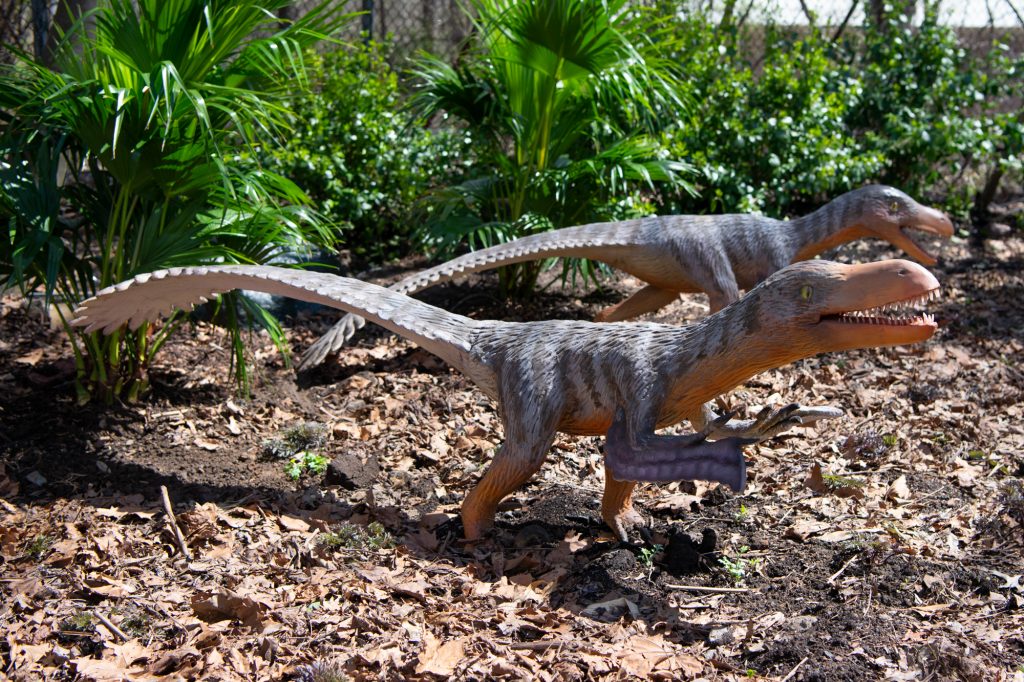
“Dinosaur Safari” at the Bronx Zoo. Photo by Julie Larsen, ©WCS.
I think that some Millennials who grew up with Jurassic Park have become a little disenchanted with dinosaurs as we’ve come to realize they were more birdlike and maybe less scary. How many of your dinosaurs have feathers?
The smaller meat-eating dinosaurs we regularly produce with a feather coating.
I know some people are enamored by the more traditional, monstrous, scaly versions of the dinosaurs from when we were growing up, but there are plenty of rather intimidating birds. If you’ve ever encountered a large eagle or a cassowary, they are quite intense. I do think dinosaurs look rather look noble with feathers!
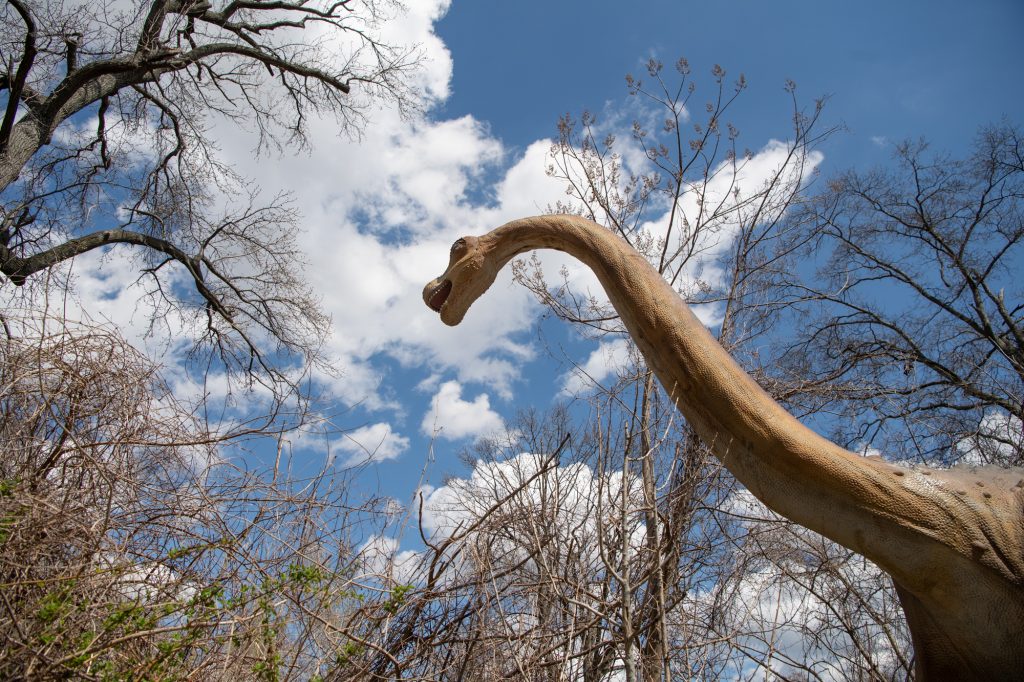
“Dinosaur Safari” at the Bronx Zoo. Photo by Julie Larsen, ©WCS.
Was there a formative dinosaur experience for you?
My father took me to see Jurassic Park when I was seven years old, and it sparked my fascination with dinosaurs and special effects.
And I always loved visiting museums and seeing the bones of these creatures. We have universal mythologies of dragons and monsters and things, but they were fictitious. To see the dinosaur skeletons, to see in some sense these dragons and monsters were real at some point in our distant history, really captured my imagination.
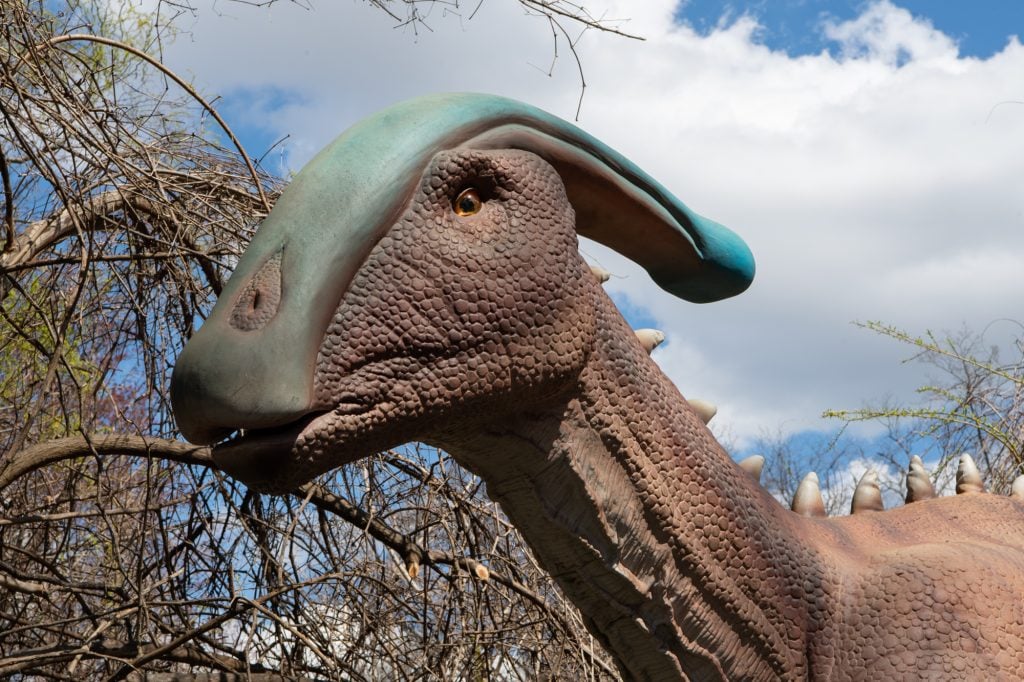
“Dinosaur Safari” at the Bronx Zoo. Photo by Julie Larsen, ©WCS.
It’s so fulfilling to produce these animatronics. I hope that sone of my enthusiasm for the subject bleeds through and inspires the younger generation and their passion for science and history.
What do you think seven-year-old Andrew would have thought if he knew he would grow up to be a professional dinosaur sculptor, bringing these animals back to life?
My little head would have exploded!
“Dinosaur Safari” is on view at the Bronx Zoo, 2300 Southern Boulevard, Bronx, New York, April 11–October 30, 2022.
